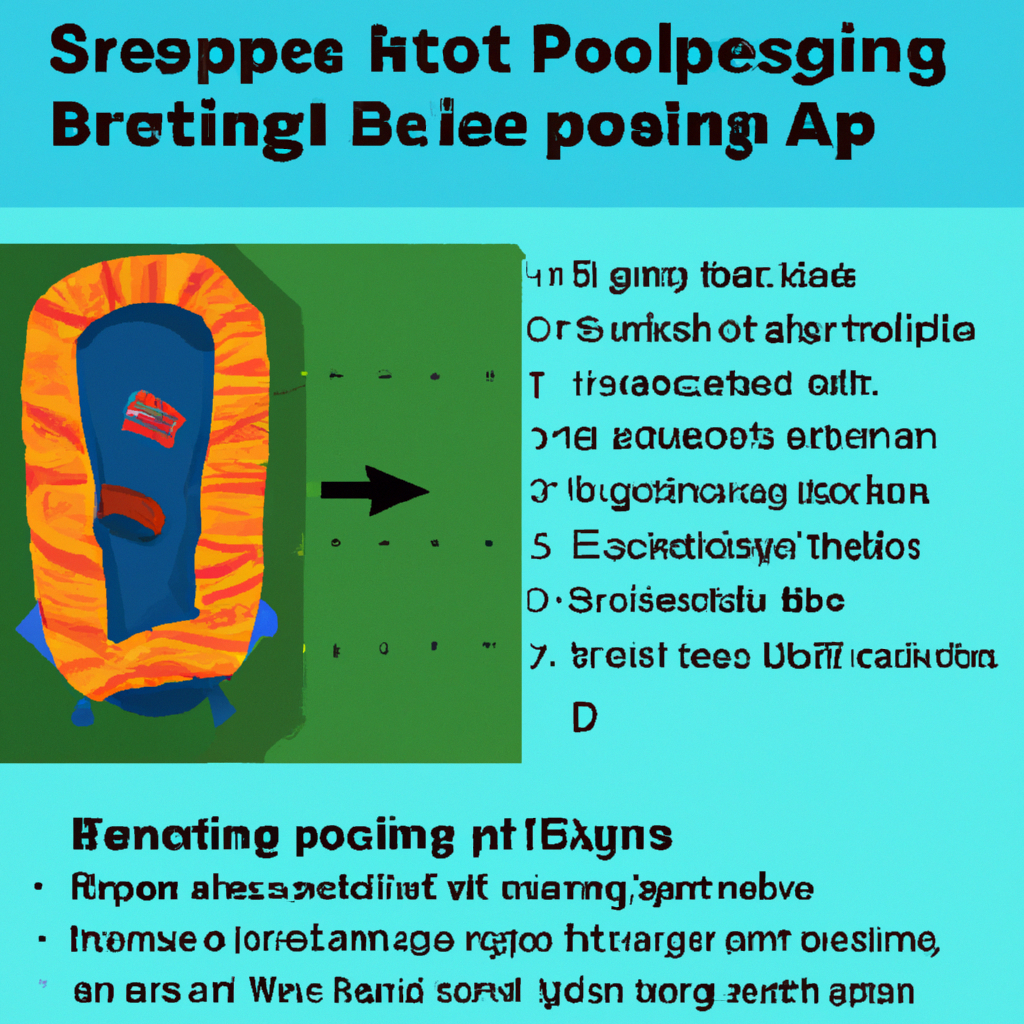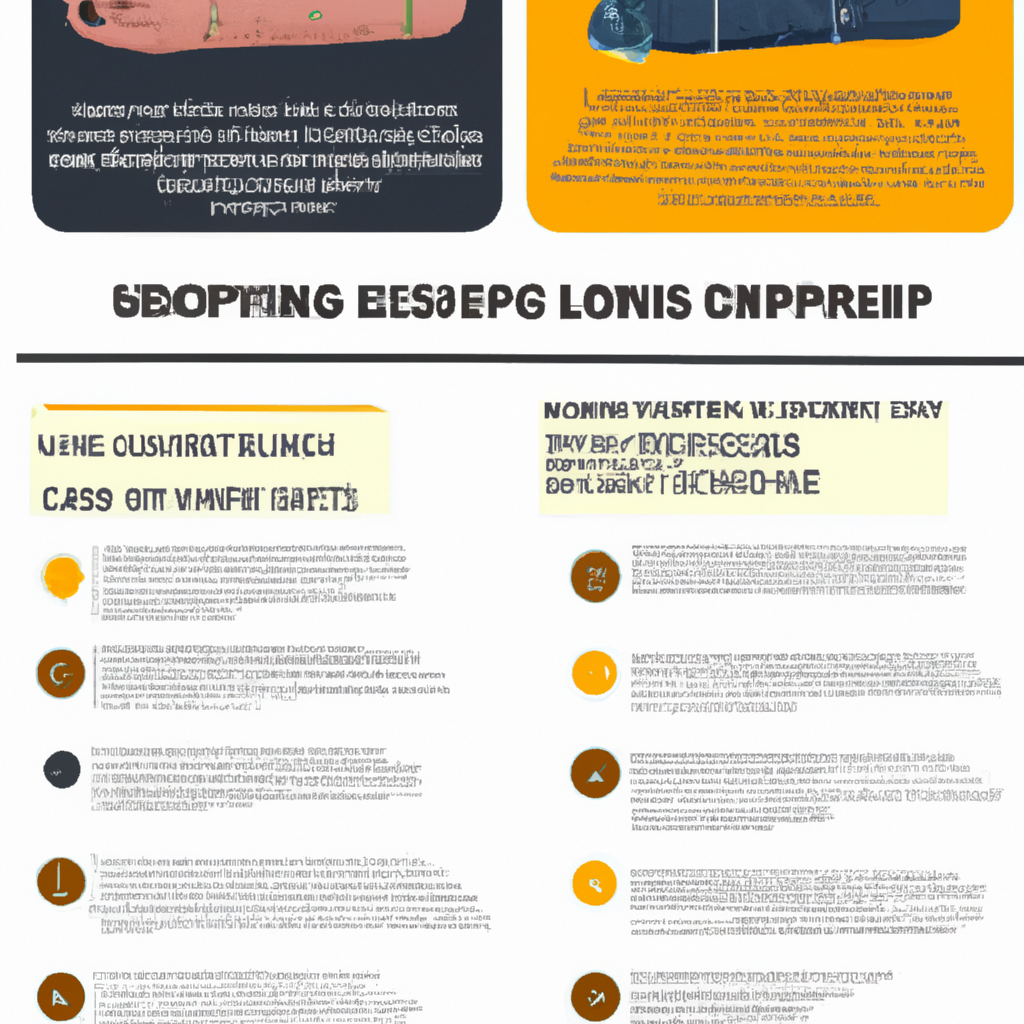If you’re an avid camper or hiker, you know that a good night’s sleep is crucial for an enjoyable outdoor adventure. But with so many sleeping bag options out there, how do you choose the right one for the ever-changing weather conditions? From chilly nights to scorching summer temperatures, this article will guide you through the factors to consider when selecting the perfect sleeping bag to keep you comfortable and cozy no matter what Mother Nature has in store. Get ready to rest easy on your next outdoor excursion!
Understanding Sleeping Bag Ratings
When choosing a sleeping bag, one of the most important factors to consider is the temperature rating. This rating indicates the lowest temperature at which the bag will keep you warm and comfortable. It is crucial to understand these ratings to ensure that you select a sleeping bag that suits the climate and weather conditions you will be facing.
Temperature Ratings
Sleeping bags are usually assigned a temperature rating by the manufacturer, which helps you determine their suitability for different weather conditions. The ratings typically fall into three categories: comfort, limit, and extreme.
The comfort rating indicates the temperature at which an average person can sleep comfortably without feeling too cold. The limit rating represents the lowest temperature at which the sleeping bag will keep you warm, albeit not necessarily comfortable. Finally, the extreme rating denotes the lowest temperature at which the bag can protect you from hypothermia. However, it is important to note that extreme temperatures are generally not recommended for regular use.
Season Ratings
Sleeping bags are also categorized based on their season ratings. These ratings help you choose the appropriate bag for different seasons of the year. The three main categories are summer season, three-season, and winter season sleeping bags.
Types of Sleeping Bags
Sleeping bags come in various shapes and designs, each suitable for different needs and preferences. Understanding the different types of sleeping bags will help you make an informed decision when selecting the one that suits you best.
Mummy Bags
Mummy bags are named after their shape, which resembles an Egyptian mummy. These bags are designed to be snug-fitting, with a tapered shape that keeps the warmth close to your body. The narrow construction minimizes the amount of air that needs to be heated, making mummy bags ideal for cold weather conditions. They also often come with a hood to provide additional insulation for your head and neck.
Rectangular Bags
Rectangular sleeping bags are the most common and versatile type. They offer more space to move around and are less constricting than mummy bags. These bags are suitable for moderate climates and generally have a full-length zipper to allow for ventilation. Rectangular bags also offer the option to be unzipped fully and used as a blanket.
Semi-Rectangular Bags
Semi-rectangular bags, also known as “tapered” or “modified mummy” bags, offer a compromise between the snugness of a mummy bag and the roominess of a rectangular bag. They provide more space around the shoulders and hips while still tapering down towards the feet. Semi-rectangular bags are a good choice for those who value a balance between comfort and warmth.

Consider the Insulation Type
Insulation is a critical factor in determining a sleeping bag’s warmth and performance. There are two main types of insulation used in sleeping bags: down and synthetic.
Down Insulation
Down insulation is derived from the soft feathers found under the outer feathers of birds, typically ducks or geese. It is known for its exceptional warmth-to-weight ratio and compressibility. Down-filled sleeping bags offer excellent insulation and are highly compressible, making them ideal for backpacking trips where weight and packability are paramount. However, they can lose their insulating properties when wet, so it is essential to keep them dry.
Synthetic Insulation
Synthetic insulation is made from polyester fibers or other synthetic materials. These sleeping bags are designed to mimic the insulating properties of down while offering better resistance to moisture. Synthetic bags dry faster and retain their warmth even when wet. They are an excellent choice for damp or humid conditions and are often more affordable than down-filled bags.
Matching Sleeping Bag and Season
Choosing a sleeping bag suited to the specific season you will be camping in is essential to ensure your comfort and safety. Consider the following categories when selecting a sleeping bag based on the season.
Summer Season Sleeping Bags
Summer season sleeping bags are designed for warm weather conditions. They are lightweight and often feature a thinner insulation layer. These bags provide ample ventilation options, such as zippered vents or mesh panels, to prevent overheating. Summer season bags are perfect for camping in hot climates and will keep you comfortable when the temperatures are mild.
Three-Season Sleeping Bags
Three-season sleeping bags are versatile and suitable for spring, summer, and fall. These bags offer a balance of warmth and breathability, making them ideal for a wide range of weather conditions. Three-season bags often have adjustable ventilation options, such as a two-way zipper, allowing you to regulate the temperature inside the bag. They provide insulation against mild cold temperatures and are a popular choice for most camping trips.
Winter Season Sleeping Bags
Winter season sleeping bags are designed to withstand freezing temperatures and harsh weather conditions. These bags have robust insulation to keep you warm in extreme cold. They often feature additional insulation in critical areas such as the footbox and hood. Winter sleeping bags are designed to be used with other insulating gear, such as sleeping bag liners and thermal clothing, for added warmth and protection.

Consider Your Activity Level
Your activity level and the type of camping or outdoor adventure you engage in should also influence your choice of sleeping bag. Consider the following categories based on your preferred activities.
Backpacking Sleeping Bags
If you enjoy backpacking and need to carry your gear for long distances, a lightweight and packable sleeping bag is essential. Backpacking sleeping bags are designed to be compact and lightweight without sacrificing their insulation properties. These bags are ideal for hikers and backpackers who need to minimize the weight and volume of their gear.
Camping Sleeping Bags
Camping sleeping bags prioritize comfort and versatility. Since weight and packability are often less critical for car camping or basecamp adventures, camping bags tend to be roomier and bulkier. These bags offer additional features such as internal pockets for storage and can often be fully unzipped to be used as a blanket. Camping sleeping bags are perfect for family camping trips or when you have more space to accommodate larger gear.
Mountaineering Sleeping Bags
Mountaineering sleeping bags are specifically designed for extreme alpine conditions. These bags are engineered to withstand high altitudes, strong winds, and freezing temperatures. They have reinforced insulation, durable outer shells, and are often waterproof or highly water-resistant. Mountaineering bags are essential for climbers and adventurers who will be exposed to challenging weather conditions in the mountains.
Evaluate Sleeping Bag Weight and Packability
The weight and packability of a sleeping bag can significantly impact your outdoor experience, particularly if you are embarking on long hikes or backpacking trips. Consider the following categories when evaluating the weight and packability of sleeping bags.
Ultralight Sleeping Bags
Ultralight sleeping bags are specifically designed to be as lightweight as possible. These bags are often made with high-performance materials and minimalist designs. They prioritize being lightweight and packable over roominess and additional features. Ultralight bags are an excellent choice for thru-hikers, ultralight backpackers, and those who prioritize reducing the weight of their gear.
Lightweight Sleeping Bags
Lightweight sleeping bags strike a balance between weight and comfort. They offer more insulation and features than ultralight bags while still being relatively lightweight. These bags are suitable for backpackers who want a good balance between comfort and portability. Lightweight bags often feature compressible insulation and compact designs that make them easy to pack and carry.
Bulkier Sleeping Bags
Bulkier sleeping bags are typically heavier and less packable than their lighter counterparts. While they might be less suitable for long hikes or backpacking trips, they offer more spaciousness and comfort. Bulkier bags are a good choice for car camping or basecamp adventures where weight and packability are less of a concern.
Consider Sleeping Bag Shape and Size
The shape and size of a sleeping bag can significantly impact its comfort and functionality. Take the following factors into account when considering the shape and size of a sleeping bag.
Length and Width
Selecting the appropriate length and width of a sleeping bag is crucial for a comfortable sleeping experience. Make sure to choose a bag that provides enough space for you to stretch out comfortably. Sleeping bags typically come in regular and long sizes, with long bags accommodating taller individuals.
Tapered vs. Non-Tapered
Tapered sleeping bags, such as mummy bags, are narrower at the feet compared to non-tapered designs like rectangular bags. Tapered bags offer a snug fit that retains heat more effectively but can feel constricting for those who prefer more room to move. Non-tapered bags provide more space to stretch out and move around comfortably but may not provide the same level of insulation.
Hood and Collar Design
Consider the hood and collar design of a sleeping bag, especially if you tend to feel cold around your head and neck. Some bags come with contoured hoods that can be adjusted to fit snugly around your head, providing additional insulation and warmth. Collars or draft tubes along the zipper help prevent cold air from entering the bag and reduce heat loss.
Look for the Right Features
Several additional features can enhance the functionality and convenience of a sleeping bag. Consider the following features when selecting a sleeping bag.
Zipper Type and Length
The type and length of the zipper on a sleeping bag can affect its ease of use and ventilation options. Look for bags with smooth-running zippers that do not snag easily. Long zippers allow for better ventilation and the option to fully unzip the bag for use as a blanket.
Insulated Draft Tubes
Insulated draft tubes are tubes filled with insulation material that run alongside the zipper to prevent cold air from seeping into the bag. These tubes ensure that the zipper area remains warm and help maintain the overall insulation of the bag.
Internal Pockets
Some sleeping bags come with internal pockets for storing small items like mobile phones, headlamps, or other essentials you want to keep within reach. Internal pockets are a convenient feature that allows you to keep your personal items organized and readily accessible while you sleep.
Pad Attachments
Sleeping bags often have pad attachments or straps that help secure them to sleeping pads. These attachments prevent the bag from sliding off the pad during the night, ensuring that you stay warm and comfortable throughout your sleep.
Prioritize Comfort
Comfort should be a top priority when selecting a sleeping bag, as it directly affects the quality of your sleep. Consider the following factors for maximum comfort.
Sleeping Bag Liner
Using a sleeping bag liner can significantly enhance comfort and hygiene. Liners are lightweight sheets designed to be used inside sleeping bags. They can add an extra layer of insulation, regulate temperature, and keep your sleeping bag clean. Liners can also be easily washed, extending the lifespan of your sleeping bag.
Pillow Compatibility
If you prefer using a pillow for added comfort, consider the pillow compatibility of the sleeping bag. Some bags come with internal pockets or sleeves specifically designed to hold a pillow in place, ensuring that it stays in position throughout the night. Alternatively, you can choose a bag with a hood that can be cinched around your own pillow for added support.
Consider the Sleeping Bag Price Range
Sleeping bags come in a wide range of prices to suit different budgets and preferences. Consider the following price ranges when selecting a sleeping bag.
Budget-Friendly Sleeping Bags
Budget-friendly sleeping bags offer good value for those on a tight budget. While they may not have all the features or premium materials of more expensive options, they still provide adequate insulation and comfort for moderate weather conditions.
Mid-Range Sleeping Bags
Mid-range sleeping bags strike a balance between affordability and quality. These bags often offer a wider range of features, better insulation, and enhanced durability. They are a popular choice for most campers and backpackers looking for a reliable sleeping bag without breaking the bank.
High-End Sleeping Bags
High-end sleeping bags are designed for serious outdoor enthusiasts and adventurers who demand the highest level of quality and performance. These bags often utilize advanced materials and technologies to provide maximum warmth, weight savings, and durability. While they can be more expensive, high-end sleeping bags are a long-term investment for those who frequently venture into extreme conditions.
By understanding sleeping bag ratings, considering the insulation type, matching the bag to the season and activity level, evaluating weight and packability, looking for the right features, prioritizing comfort, and considering the price range, you can make an informed decision when choosing the perfect sleeping bag for your outdoor adventures. With the right sleeping bag in hand, you can enjoy a good night’s sleep and wake up refreshed and ready for your next adventure.

